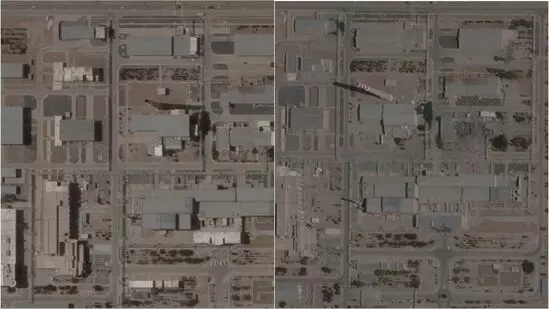Satellite images reveal extensive damage to Iranian nuclear sites following Israeli airstrikes

The Israeli-Iranian conflict has taken a drastic and perilous turn. Israel has targeted many of Iran's most important military and nuclear sites in what started as a series of attacks and has since intensified into a full-fledged firefight.
In just five days, Israel has targeted facilities across the country, including the Isfahan nuclear research center—Iran’s largest—along with the Shiraz missile plant, the Tabriz North missile base, and the underground Natanz uranium enrichment site. These aren’t just military installations; they’re the backbone of Iran’s defense and nuclear programs.
The damage is significant. The UN’s nuclear watchdog, the IAEA, has confirmed that four critical buildings at the Isfahan site were hit. At Natanz, where Iran carries out most of its uranium enrichment, Israeli strikes may have crippled or even destroyed underground centrifuge halls. Satellite images now show the true extent of destruction at places like the Tabriz missile base and Shiraz electronics facility.
Other targets included military and missile sites in Kermanshah, Bid Kaneh, and Piranshahr—many of which were involved in building or storing ballistic missiles. Notably, Israel has so far avoided striking Iran’s Fordow and Arak nuclear facilities, though experts fear it’s only a matter of time.
The operation, dubbed “Rising Lion,” marks a sharp escalation. And the cost is already devastating. In less than a week, more than 220 people have been killed in Iran, and 24 lives have been lost in Israel. With no signs of backing down, both sides are trading missiles and drones. Each is now threatening even larger attacks.
Global leaders are encouraging both countries to distance themselves from the brink as the violence rages on. However, a peaceful solution seems more and more unattainable since tensions are rising and the language is becoming more and more heated every day.
